Two Important Steps for Success.
In the beginning of my Art Teacher journey, teaching colored pencil techniques to beginners meant passing out some cool images of holiday ornaments and posting a two week deadline and waiting for the magic to happen. Oh, it happened alright…but it wasn’t magic. It was 3 kids out of 30 doing amazing work and the rest of the class limping along, complaining about how hard it was, or breaking pencils and ruining piece after piece of paper…”Can I start over?”
The magic quickly became mania and I decided to formulate a plan for success. For all students. Of all skill levels.
The Scaffold
In my beginner art classes – Art 1 Foundations and Drawing 1 – we approach color theory with colored pencils. Colored Pencil is the last unit in my 6-part scaffold spread out over an 18-week semester with 90 minute block classes meeting every day.
The drawing scaffold looks like this:
- Line Drawing Techniques
- Drawing with Basic Shapes
- Examining Space – Negative Space Techniques
- Intro to Value – Graphite Pencil Shading
- Intro to Colored Pencil Techniques – High Contrast Drawing – White colored pencil on black paper
- Intro to Color Theory – Colored Pencil
Side Note: In Art 1 Foundations, these units are shorter in order to accommodate a unit on Watercolor and Acrylic Painting, which both occur after colored pencil so the students are familiar with color theory and we can focus solely on the painting techniques.
The Plan and the Process
After much reflection on my previous colored pencil process, I asked myself these questions:
“What was the biggest problem the kids faced with the drawing?”
“Which actions did I NOT do that caused them to face these problems?”
“What exactly do I want them to learn?”
“How can I re-work the process so they learn it?”
I then examined the finished work and wrote down my thoughts on what went wrong.
What I discovered
The two biggest areas of struggle were pencil application and value creation.
Overall, their pencil strokes were so heavy and harsh that there was no room for blending and layering. As a result, most kids gave up after one or two attempts and moved on to another area in the drawing, repeated those same unsuccessful steps a few more times, and then said, “I’m done.”
Instead of creating darker values in the necessary areas, they just pressed harder, creating a more intense color, but not a darker color. The drawing was mostly “flat” as a result. This was common in about 75% of the drawings.
There were other issues as well, but these were the two biggest areas I needed to work on, and I figured if I got these two under control, the other minor issues would naturally improve as well.
The Plan and the Process
At the end of the day, I approach teaching any concept from the standpoint that I know the concept/material/medium and how it works, but I have to assume that the people I’m teaching know nothing. Even when I teach adults, I assume nobody knows anything.
Assuming is where I get into trouble.
“Oh, they know not to press hard with the pencils…”
No, they don’t.
So now back to the process. I decided to abandon the “thing” they were going to draw, and just focus on the colored pencil technique. Literally, just how you move the pencil across the paper. We like to say in my class, “this is the casual dating phase of the learning.” We are getting to know the pencil, what to expect from it, what it will do and not do depending on how we treat it.
I like to approach learners where they are. Kids can understand this philosophy and why it is important to “get to know” something. It may sound corny, but it works.
I decided value scales were a good place to start. Simple. Direct. Just hues, tints and shades. We don’t use black in my classes, so I teach shades with cool foundational undertones beneath the hues for rich gorgeous dark values. It yields amazing results and the kids love the customized approach. Everyone’s dark values are unique to them. No two dark reds are the same. It’s really cool and they really get into it.
I put together a presentation with one page of notes on the front and the value scales on the back. Simple. Not too long, not too involved. I kept thinking, “what EXACTLY do I want them to learn?” And it stuck with that. I created the notes as a fill in the blank presentation, so not too much writing, but enough that they had to focus to know what to complete. They turn this sheet in for a grade at the end of the exercise – once the value scales are completed, so everyone does it. I have also been known to throw a pop quiz the next day (they are allowed to use the notes), so they always take notes. You never know what Ms. Fox will do…be prepared…lol
I noticed that after the notes, they dove right into the value scales fearlessly. And with great success. No hard pressure, no intense colors that should have been darker…it was magic. For real, this time.
So I asked them, “why do you think this is going so much better than the first drawings?” And they said, “Well now we know how to use colored pencils! And these are just squares..this is easy!”
Talk about out of the mouth of babes. Wow.
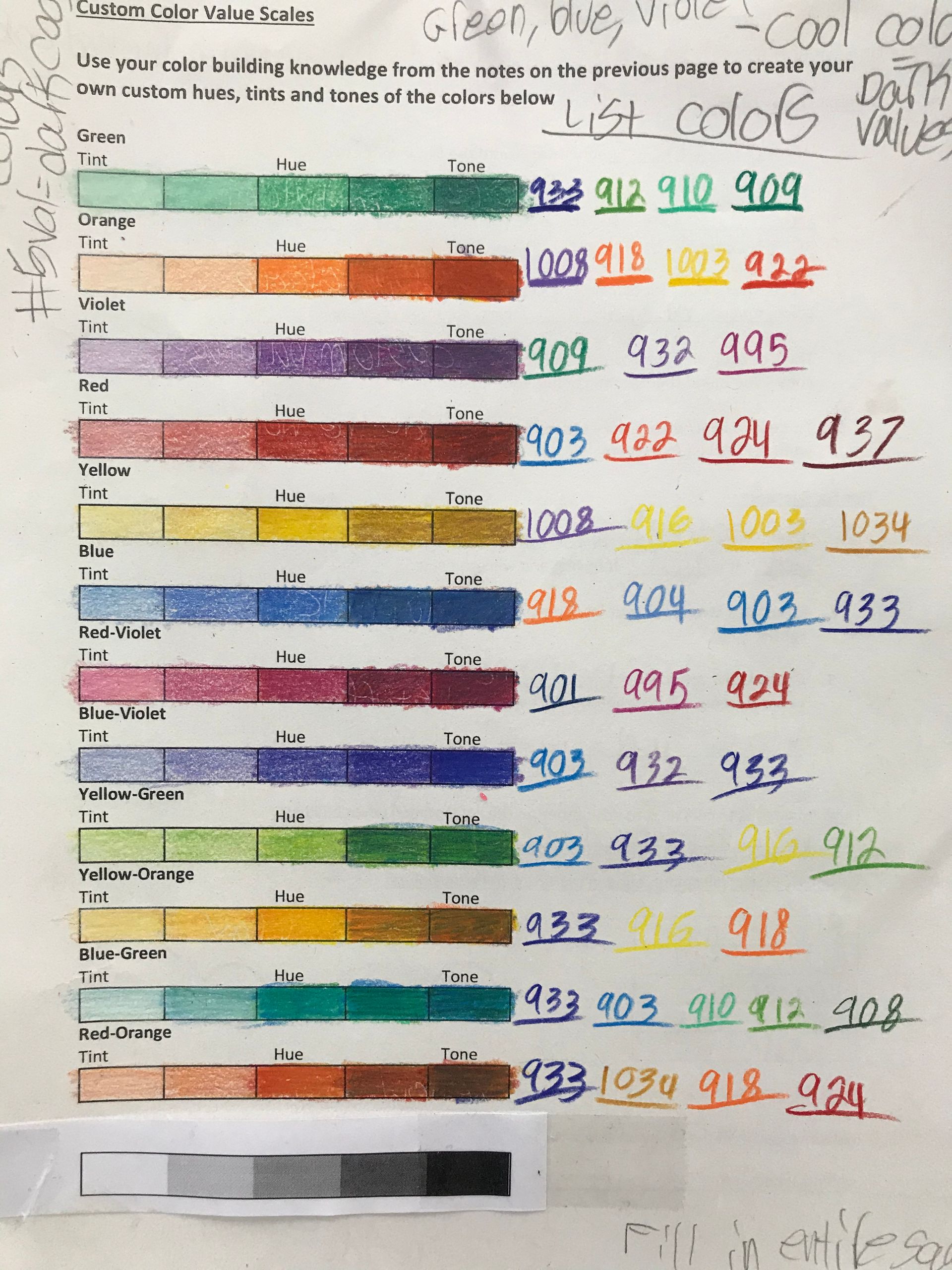
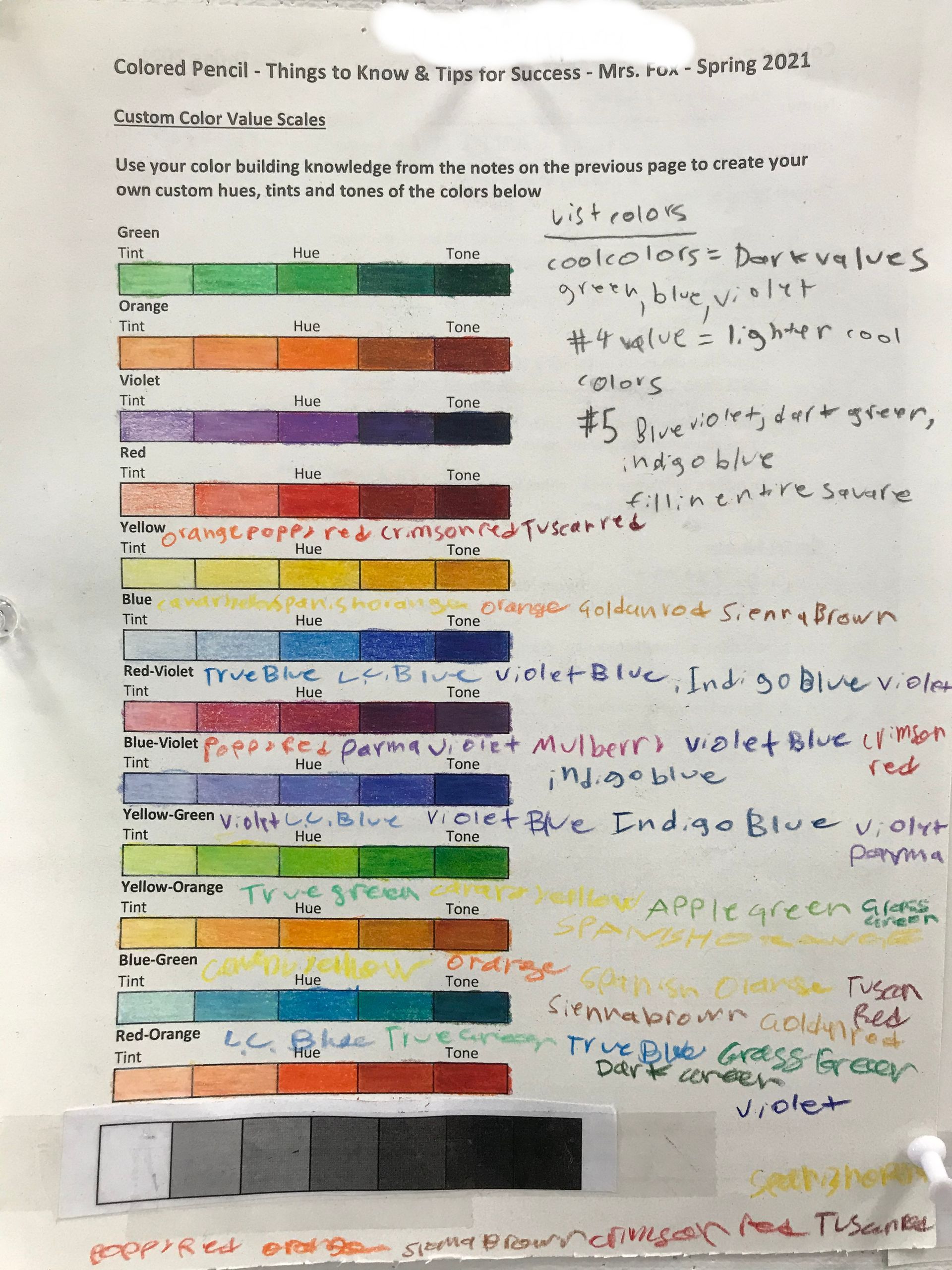
Next Steps
As much as I wanted to jump into drawing something cool, I decided that although they knew how to apply the pencil and how to create various values, they had not created a smooth transition of value yet. If you are familiar with colored pencil, you know that value transition is a beast – especially smooth value transitions.
So I decided to stay with an “easy” subject matter for the next step. A sphere. Small. Simple. In a two-part format. They will create two spheres – small ones – on a worksheet that is a half sheet of paper. Something I discovered teaching graphite pencil shading – the half sheet is way less intimidating than the whole worksheet…most of teaching is psychological, and this little trick WORKS.
The kids were ready to jump in and we talked about how to create smooth transitions. I demonstrated and I uploaded a tutorial that I created so they could watch and rewatch as needed. Never underestimate the power of the tutorial. Kids who have processing struggles find this learning option so reassuring as they can watch as many times as necessary. I narrate all my tutorials, so it’s like me teaching it to them personally. They love it.
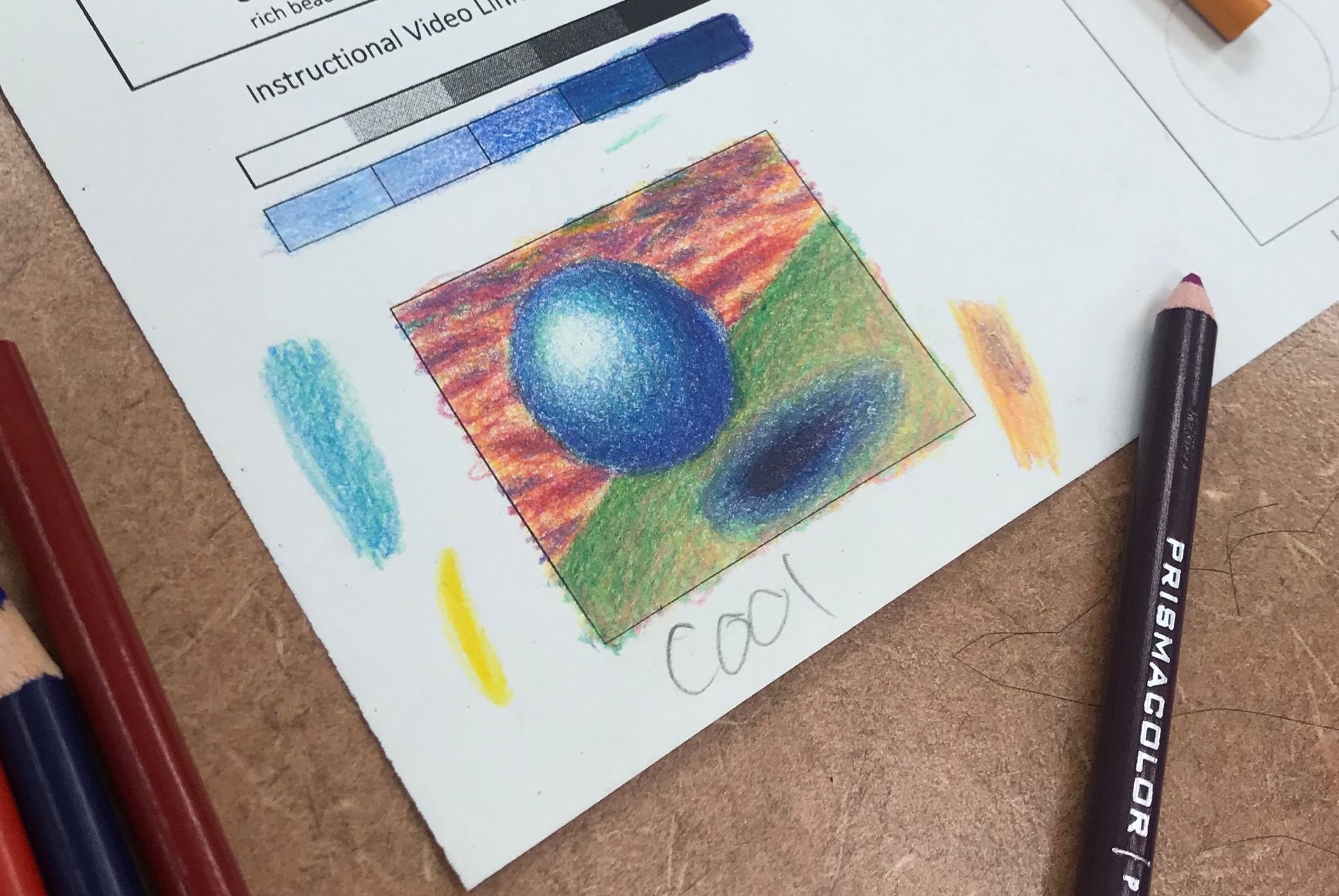
The Struggle & The Ultimate Success
The biggest struggle with these exercises was not for the kids, it was for me. All I wanted was for them to draw cool, dazzling artwork that I could put on my Instagram. I wanted to be dancing in the end zone and high-fiving them for their fabulous creations. Not watching them color squares and circles for 4 days straight…how boring is that????
Well guess what. All this boring work on the front end paid off. With the skills and colored pencil techniques in place, not only were the kids ready to draw cool stuff, they wanted to draw cool stuff. They were confident and excited for the challenge I had for them.
In Art 1 Foundations, it’s a small drawing. And it’s always preceded by a smaller practice drawing. For this level it is usually a gummy bear drawing. Two reasons – this is small and not intimidating and kids love gummy bears. We usually do a gummy bear worksheet (tutorial for this too, in case they need it), then they do a finished candy drawing. Depending on the time we have left, they either take their own references, or they can choose from a variety of images that I have taken.
In Drawing 1, they do a project called Candy Ocean, which is larger and more complex. Because they have the Art 1 experience under their belts, this is always a very successful lesson. We still review the info, value scales and spheres, because learning retention is a challenge these days.
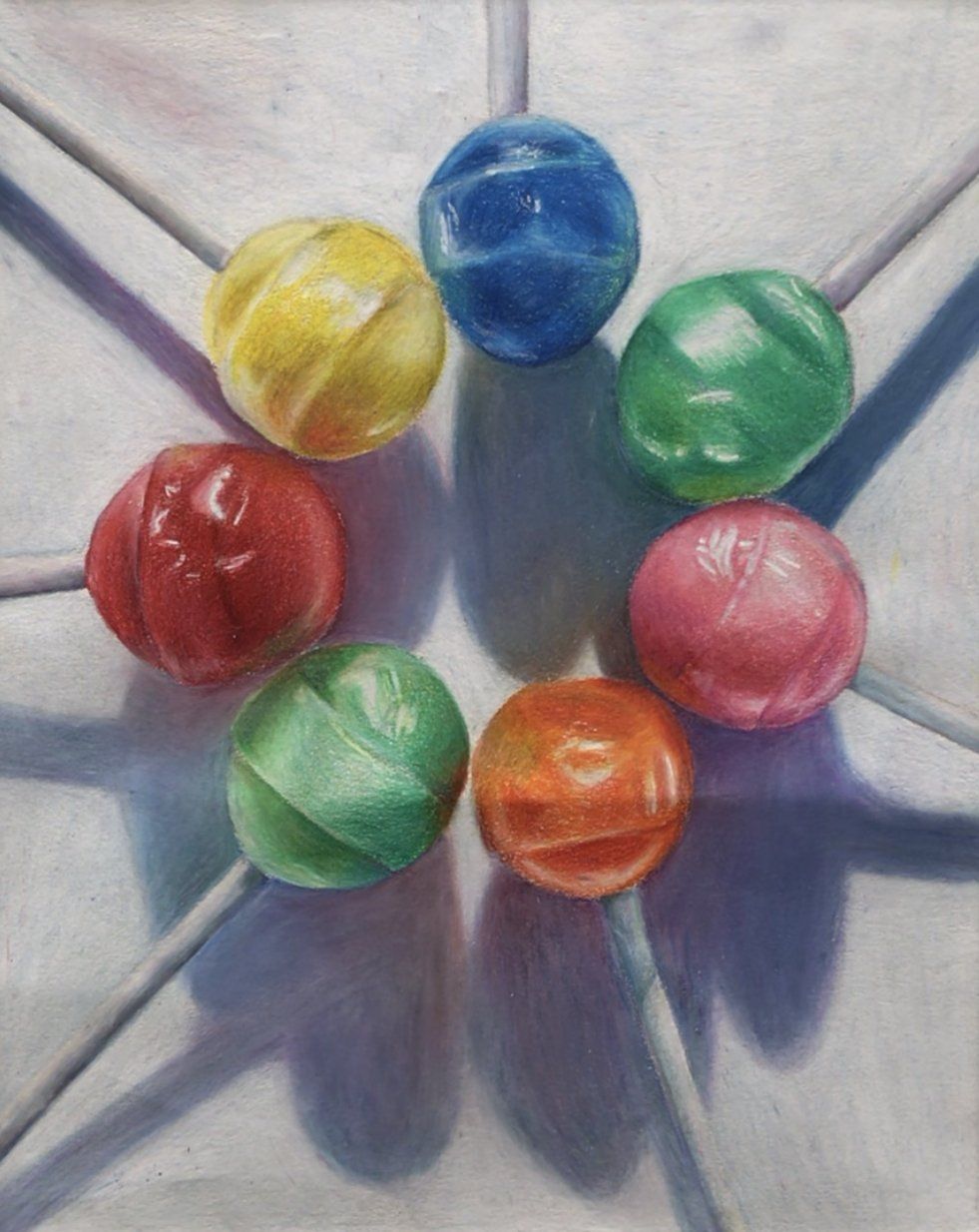
The Takeaway
This process, and the discoveries I made along the way, re-vamped my entire teaching style. I went back to square one (pun intended) in all areas of my media instruction. I embraced the Value Scale and the Sphere and worked them into my graphite pencil, oil pastel, watercolor and acrylic painting instruction.
The work from the next year was better and the year after that, even better. I knew I was onto something big. So when I began creating content for art teachers, this became the cornerstone of my lessons. Values Scales and Spheres. You see them in every area of my shop. If you’ve not visited the rest of my website, I hope you will browse around and check out the student work.
All the work you see on the site was created by my kids who drew and painted a LOT of value scales and spheres prior to these artworks.
Thanks for reading! I hope this was helpful and I would love to have you on my mailing list for lots of art teacher goodies!
Be Among the First to Know
Please join my email list for “The Weekly Fabulousness” Newsletter, and get cool Art Teacher Freebies, new and updated product info, and Art Educator PD Workshop Dates (email subscribers get first dibs on seats!)
Not sure you’re interested in being on the list?
Check out my teaching style with a FREE Mini-Workshop!
Each one comes complete with classroom resources. Take all six!
Choose from these FREE workshop topics:
- Colored Pencil Basics
- Colored Pencil Skin Tones
- How to Draw the Human Eye
- Art Task Cards – Drawing on a Grid
- How to Draw Ice Cream
- Acrylic Painting Basics
Have a wonderful and safe year and Happy Teaching!
Tiff 🙂
colored pencil drawing
prismacolor techniques
prismacolor artist
final sale may not be returned
set digital lessons level
practice foundational drawing and shading skills
soft core colored pencils
feel free
drawing art set digital
tooth of the paper
drawing set teaches
art set digital lessons
white pencil
layers of color
learn at your own pace
art supplies included
colored pencil art
professional grade art supplies
high quality art supplies
colour pencil drawing
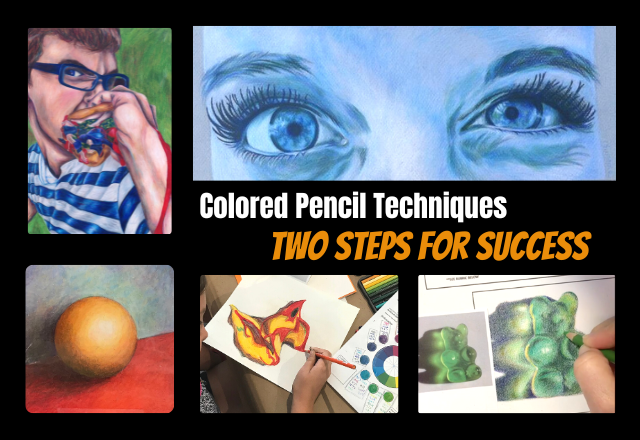
Share This Post